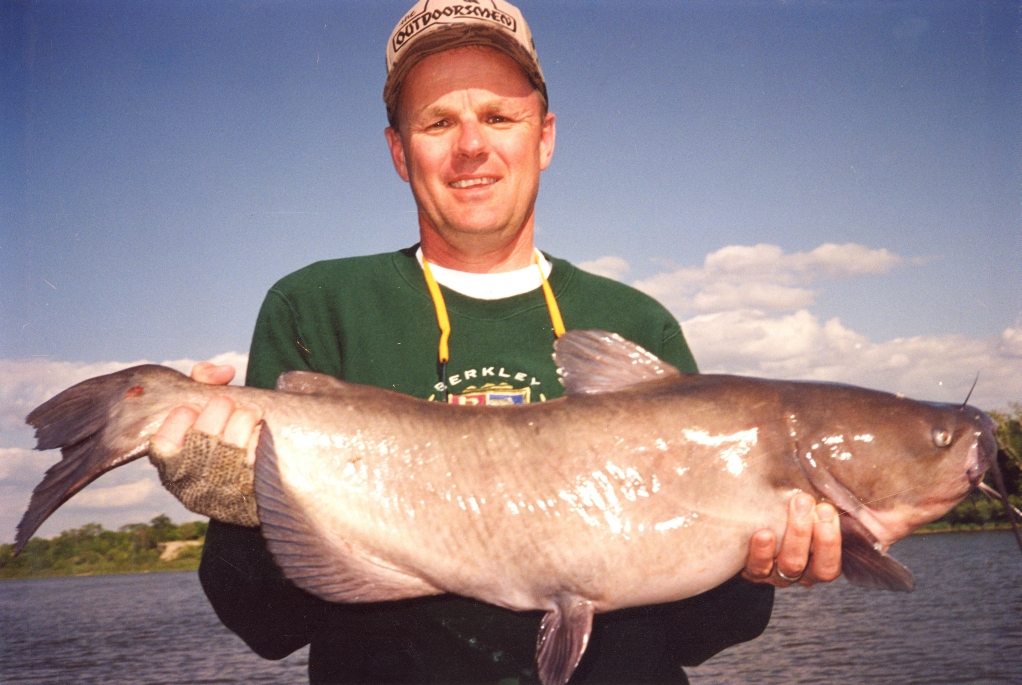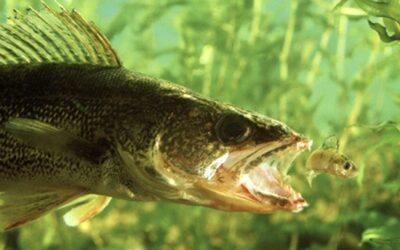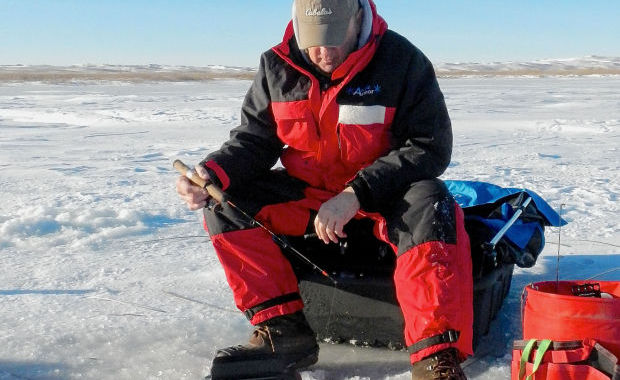Anyone who has ever had the opportunity to tangle with a big catfish knows how powerful a big cat is.
They’re not the prettiest fish in the water, but they are plentiful, fun to catch and great eating.
Cats are bottom-hugging creatures, spending most of their time either on the bottom or close to it. Their eyesight is not very good, so they depend on their sense of smell and taste to find their food. The barbells protruding from their upper lip are covered with taste receptors, as are their lips, helping catfish to locate a meal.
In the upper Midwest, you’ll find three species of catfish: the Channel, Blue and the Flathead.
In this column, we’re going to be talking about the Channel catfish.
Channel catfish are the most abundant fish species in our area and are found in most rivers, ponds, small lakes and reservoirs.
You’ll find them below the dam at Gavin’s Point and throughout the Missouri River system. Look for channel catfish in deeper holes below the spillway, behind the rubble below the turbines and in snag-infested areas adjacent to deeper water.
They’re opportunists when it comes to what they eat; feeding on just about anything, they can get their mouth around.
I hold two line-class world records for Channel Catfish, which were taken on cutbait, which is no more than a piece of flesh cut from a Sucker and Goldeye. If you are going to use cutbait, be sure to leave the skin as this makes it harder for the fish to pull from the hook and with the skin attached, the bait will stay on your hook longer
They will also take worms, Bluegills, Bullheads, Shad entrails, chicken or turkey liver, stink baits and about anything else, you throw at them.
Stink baits are popular on the Missouri River and as their name suggests, are a smelly concoction. The reason they are so popular is that they are easy to use and very productive.

Author with one of his Line Class World Record Channel Catfish taken while fishing the Red River in Manitoba Canada.
Many people make up their own mixture using a smelly cheese, blood and other “secret” ingredients.
If you don’t have your own recipe for stink bait, you can find it and plastic stink bait worms at most bait shops. Stink bait worms come pre-rigged with a short heavy monofilament leader with a small treble hook attached to the bottom of the worm.
A stink bait worm rig is nothing more than a 3/8 or larger egg sinker, a snap swivel and plastic stink bait worm. Rigging it is simple. Run your line through egg sinker and then attach the snap swivel to the line. Clip the leader from the stink bait worm to the snap and then, and then using a stick, dip the worm into the stink bait. Cast the bait into a likely looking spot and wait for the catfish to work his way up to you bait. If you are fishing in heavy current, you’ll have to redo your bait regularly, as the current will wash your bait off quicker in the current than it would in calm water.
Don’t think that the fish messing with your bait is a small fish as even huge catfish will peck at your bait, so once you feel the bite, let out a little line allowing the catfish to pick the bait up in its mouth. After a few seconds, take up the slack line and if you feel the weight at the end of your line, set the hook hard.
Many anglers like to drift the fast water below the turbines for catfish. The best rig that I’ve found for this is a simple crappie rig baited with turkey liver. I use a size one hook or larger on the crappie rigs and instead of attaching the weight to the snap at the bottom, I use a short rubber band between my snap and the weight. This helps to keep my rig from being snagged up on every drift. If the weight does hang up, just pull back hard on the line and then release the tension, usually the weight will pop out of the snag and if it doesn’t, the rubber band will break and all you have lost is the sinker, not the entire rig.
The key to drifting the fast water for catfish is to keep your line as vertical as possible; this is done by kicking your motor in and out of gear to keep the boat moving at the same speed as your bait. If your bait is too far behind the boat, you’ll end up snagged. As the boat drifts, you’ll want to jig the rig, raising it up off the bottom and then let it drop back down jigging it up and down as you move down stream.
Don’t use too heavy of weight as you don’t want your bait dragging on the bottom, you want it to tick the bottom or be just above it. A heavy weight will keep your rig on the bottom too much and find more snags than fish.
Try catfishing, as it’s a lot of fun as Channel cats are pretty accommodating when it comes to taking the bait, and after a long day of fishing, they make a great meal.
Anyone who has ever had the opportunity to tangle with a big catfish knows how powerful a big cat is.
They’re not the prettiest fish in the water, but they are plentiful, fun to catch and great eating.
Cats are bottom-hugging creatures, spending most of their time either on the bottom or close to it. Their eyesight is not very good, so they depend on their sense of smell and taste to find their food. The barbells protruding from their upper lip are covered with taste receptors, as are their lips, helping catfish to locate a meal.
In the upper Midwest, you’ll find three species of catfish: the Channel, Blue and the Flathead.
In this column, we’re going to be talking about the Channel catfish.
Channel catfish are the most abundant fish species in our area and are found in most rivers, ponds, small lakes and reservoirs.
You’ll find them below the dam at Gavin’s Point and throughout the Missouri River system. Look for channel catfish in deeper holes below the spillway, behind the rubble below the turbines and in snag-infested areas adjacent to deeper water.
They’re opportunists when it comes to what they eat; feeding on just about anything, they can get their mouth around.
I hold two line-class world records for Channel Catfish, which were taken on cutbait, which is no more than a piece of flesh cut from a Sucker and Goldeye. If you are going to use cutbait, be sure to leave the skin as this makes it harder for the fish to pull from the hook and with the skin attached, the bait will stay on your hook longer
They will also take worms, Bluegills, Bullheads, Shad entrails, chicken or turkey liver, stink baits and about anything else, you throw at them.
Stink baits are popular on the Missouri River and as their name suggests, are a smelly concoction. The reason they are so popular is that they are easy to use and very productive.
Many people make up their own mixture using a smelly cheese, blood and other “secret” ingredients.
If you don’t have your own recipe for stink bait, you can find it and plastic stink bait worms at most bait shops. Stink bait worms come pre-rigged with a short heavy monofilament leader with a small treble hook attached to the bottom of the worm.
A stink bait worm rig is nothing more than a 3/8 or larger egg sinker, a snap swivel and plastic stink bait worm. Rigging it is simple. Run your line through egg sinker and then attach the snap swivel to the line. Clip the leader from the stink bait worm to the snap and then, and then using a stick, dip the worm into the stink bait. Cast the bait into a likely looking spot and wait for the catfish to work his way up to you bait. If you are fishing in heavy current, you’ll have to redo your bait regularly, as the current will wash your bait off quicker in the current than it would in calm water.
Don’t think that the fish messing with your bait is a small fish as even huge catfish will peck at your bait, so once you feel the bite, let out a little line allowing the catfish to pick the bait up in its mouth. After a few seconds, take up the slack line and if you feel the weight at the end of your line, set the hook hard.
Many anglers like to drift the fast water below the turbines for catfish. The best rig that I’ve found for this is a simple crappie rig baited with turkey liver. I use a size one hook or larger on the crappie rigs and instead of attaching the weight to the snap at the bottom, I use a short rubber band between my snap and the weight. This helps to keep my rig from being snagged up on every drift. If the weight does hang up, just pull back hard on the line and then release the tension, usually the weight will pop out of the snag and if it doesn’t, the rubber band will break and all you have lost is the sinker, not the entire rig.
The key to drifting the fast water for catfish is to keep your line as vertical as possible; this is done by kicking your motor in and out of gear to keep the boat moving at the same speed as your bait. If your bait is too far behind the boat, you’ll end up snagged. As the boat drifts, you’ll want to jig the rig, raising it up off the bottom and then let it drop back down jigging it up and down as you move down stream.
Don’t use too heavy of weight as you don’t want your bait dragging on the bottom, you want it to tick the bottom or be just above it. A heavy weight will keep your rig on the bottom too much and find more snags than fish.
Try catfishing, as it’s a lot of fun as Channel cats are pretty accommodating when it comes to taking the bait, and after a long day of fishing, they make a great meal.





0 Comments